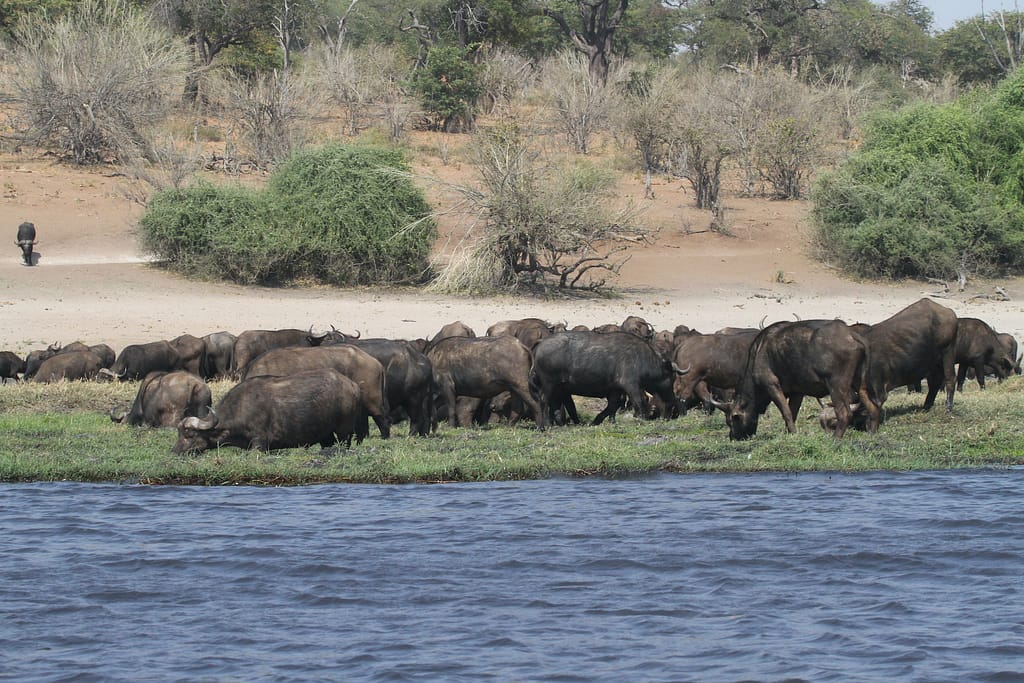Stage 1-A from Cape Town to Cairo: From Cape Town to Livingstone
Our trans-African journey that will take us to Cairo starts from the beautiful city of Cape Town in South Africa, and during our first stop we will explore 3 different states: South Africa, Botswana and Zambia.
In South Africa, after having explored the Cape Peninsula, we will go up north and enter the territory of the Karoo desert where we will visit countries that seem to have stopped in time and admire the splendid natural sceneries.
Continuing the journey we will visit the Candeboo National Park, the diamond city of Kimberly and then arrive in Johannesburg.
Crossing the border into Botswana we will have the opportunity to visit a rhino sanctuary and then enjoy safaris in the Okavango and Chobe.
In Zambia we will admire one of the most impressive and fascinating phenomena of nature: the grandiose Victoria Falls and, for the more eager for adrenaline, we will be able to practice numerous activities.
The highlights of the journey from Cape Town to Livingstone
Along the first leg of our journey through Africa, from Cape Town to Livingstone we will have the opportunity to visit some of the most iconic destinations in southern Africa.
- The Peninsula and Cape Town
- The Karoo region
- Graaff-Reinet and the Candeboo National Park
- Kimberley, the city of diamonds
- The city of Johannesburg
- The rhino sanctuary in Botswana
- Mokoro safari in the Okavango delta
- Makgadikgadi National Park
- An aperitif with the giants at Elephant sands
- The incredible Chobe National Park
- The Victoria Falls in Zambia
Traveling from Cape Town to Livingstone: the enchanting Cape Town
Cape Town, affectionately known as the Mother City, is set against the backdrop of the iconic Table Mountain plateau and the sapphire blue bay of Table Bay, famous for its seal population and great white sharks.
Cape Town is considered one of the most beautiful cities in the world thanks to its stunning scenery, its beaches, mountainous surroundings and centuries-old architecture that mixes with a modern minimalist design.
The iconic Table Mountain plateau is the backdrop to the city and is a must for visitors, taking the cable car to the top of the mountain is an experience that offers a 360 degree panoramic view of the surrounding area and the city .
With an enchanting scenic drive along the rocky coast of the Cape Peninsula, you will reach Cape Point and the Cape of Good Hope; the Cape is also located within the Table Mountain National Park which gives the opportunity to see the fascinating flowers of the Cape Floral Kingdom, one of only six floral kingdoms in the world.
The Cape Floral Kingdom, which extends over 90,000 square kilometers, is one of the richest floral areas on the planet and has been declared a World Heritage Site by the UNESCO committee; of the 9,600 plant species found in this kingdom, about 70% are found nowhere else in the world.
No trip to Cape Town is complete without an excursion to the wine area, the Cape Winelands is home to numerous wineries producing fine wines.
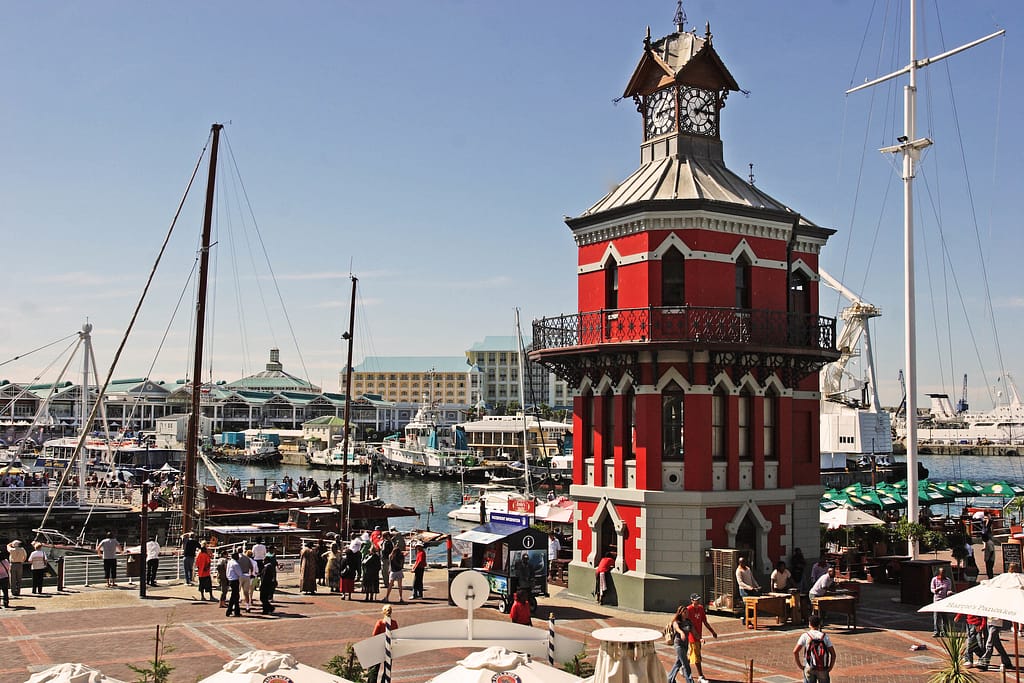
Traveling from Cape Town to Livingstone: the Karoo region
The Karoo is the magical desert space of South Africa; the huge semi-desert expanse is a vast and ancient seabed straddling the central area of the country
Karoo is a Bushman word for a dry place, a journey through the Karoo allows you to visit picturesque Victorian cities, discover abundant wildlife in spectacular nature reserves and explore one of the largest fossil sites in the world.
Over the past two centuries, more than 100 towns, villages, and small settlements have sprung up in the region that have become the permanent home of some of the most creative people in the country, in the form of novelists, outsider artists, artisans, musicians, eccentrics, brewers, funky chefs, sculptors, hoteliers and a new generation of young organic farmers.
We will visit Prince Albert, a delightful historic town on the southern edge of the Great Karoo, the town is situated at the foot of the Swartberg mountain range in spectacular scenery and is a well preserved jewel of Victorian buildings and Cape Dutch style buildings.
We will travel the 27km Swartberg Pass which is considered one of the most beautiful mountain passes in the world: a dirt road that winds up to the summit at 1,585 meters above sea level in steep zigzags and sudden switchbacks with breathtaking views at every turn and ancient geological formations and is the shortest route between Prince Albert and Oudtshoorn.
Oudtshoorn is famous for being the ostrich capital of the world, these large flightless birds are famous all over the world for their beautiful feathers, soft skin, large eggs and healthy, fat-free meat; we will visit a farm and closely observe these curious creatures.
We will also visit the historic village of Matjiesfontein nestled in one of the most beautiful landscapes of the Great Karoo.
Matjiesfontein is one of the few remaining outposts of the British Empire; consists of a main road: along one side of the road all the old restored colonial-era buildings are arranged, on the other side of the road is the Matjiesfontein train station, which also houses the largest private museum in South Africa, providing a window on the lifestyle and culture of the Cape Colony at the end of the 19th century.
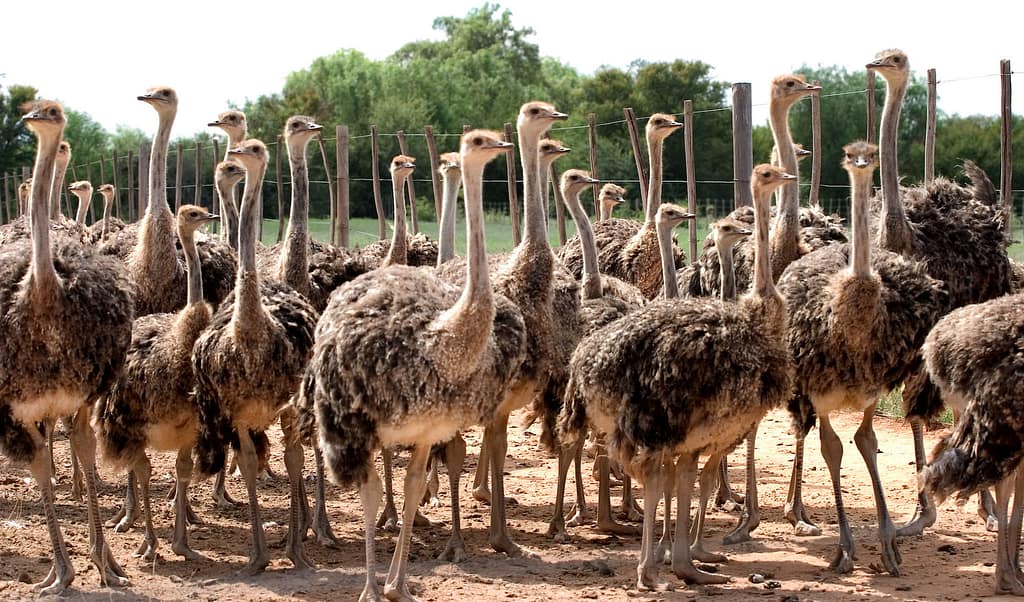
Traveling from Cape Town to Livingstone: Graaff-Reinet and the Candeboo National Park
Graaff-Reinet is the fourth oldest city in South Africa and originated as a frontier settlement in a territory inhabited for centuries by the San, or Bushmen.
Graff-Reinet is certainly one of the most evocative cities in South Africa with over 200 buildings declared National Monuments and an entire street restored, including its slave houses.
Graaff-Reinet, known as the gem of the Karoo, has retained much of the character of a typical 19th century town and is well worth a visit for it.
Candeboo National Park is a huge protected area characterized by the stunning Valley of Desolation, with vertical walls and dolerite columns that rise 120 meters from the valley floor, against the timeless backdrop of the vast Camdeboo plains.
Camdeboo National Park surprises with the diversity of fauna and flora: there are over 220 recorded bird species, 336 plants and 43 mammals including the endangered Cape mountain zebra, the rare black wildebeest, kudus, buffaloes, majestic eagles and Kori’s bustard, the heaviest flying bird in the world.
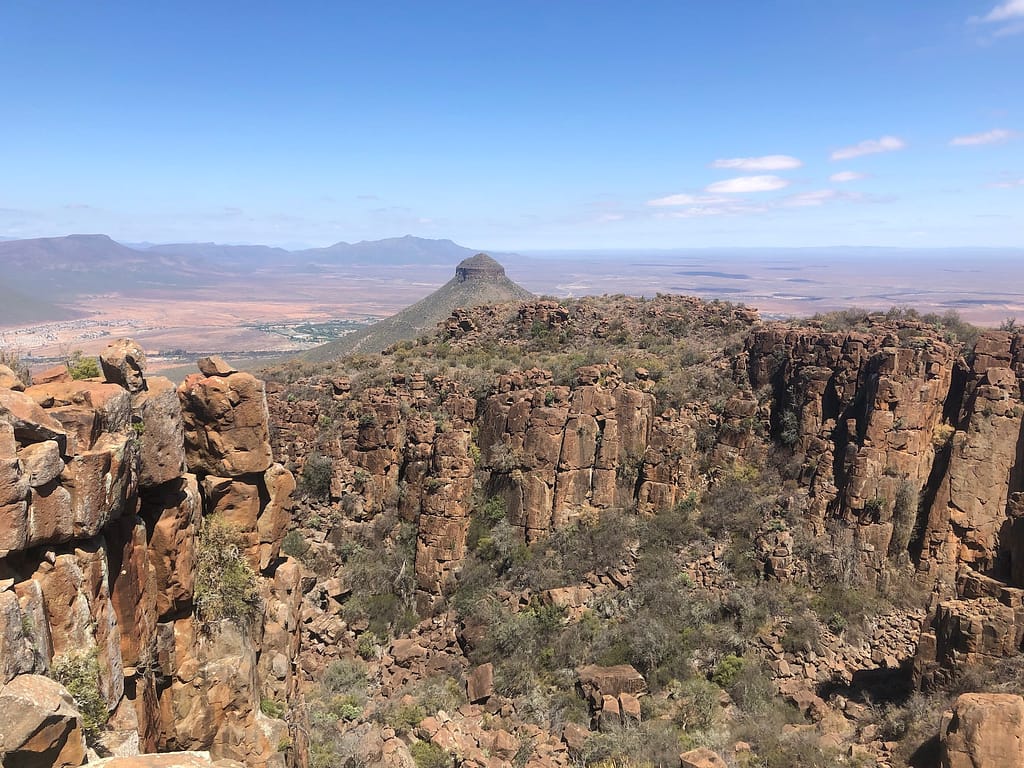
We will also have time to explore Nieu Bethesda, a delightful Karoo village set in a spectacular setting; the most famous attraction within Nieu Bethesda is undoubtedly the extraordinary, extravagant, Owl House and its collection of hundreds of sculptures built in concrete, wire mesh and stained glass.
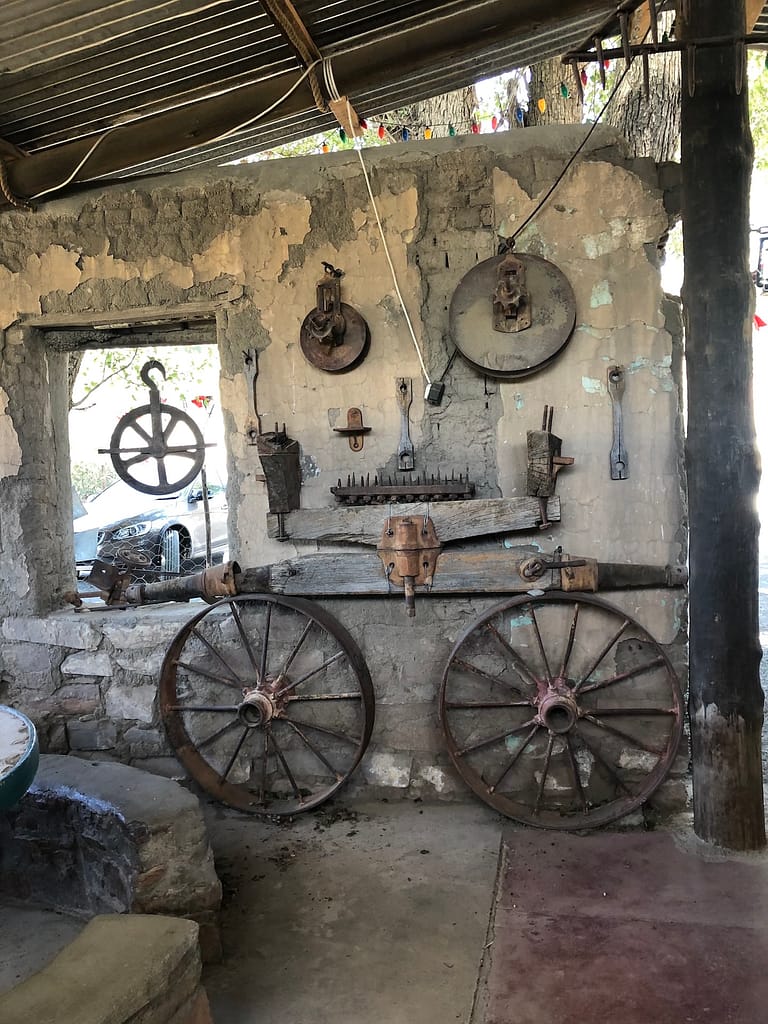
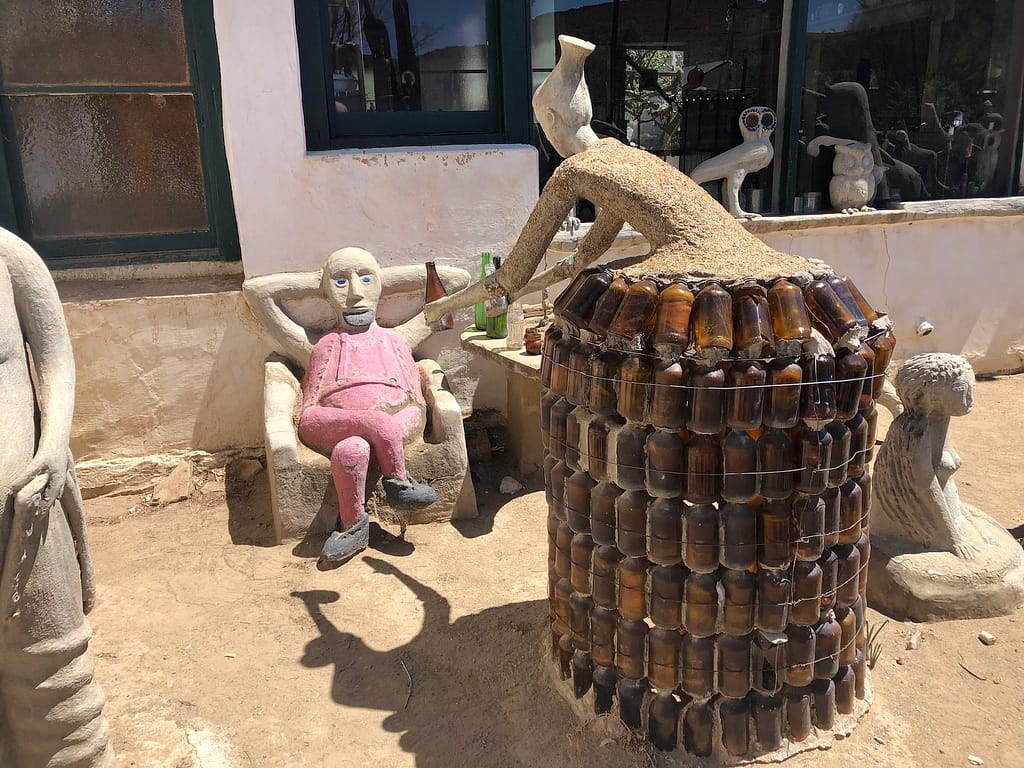
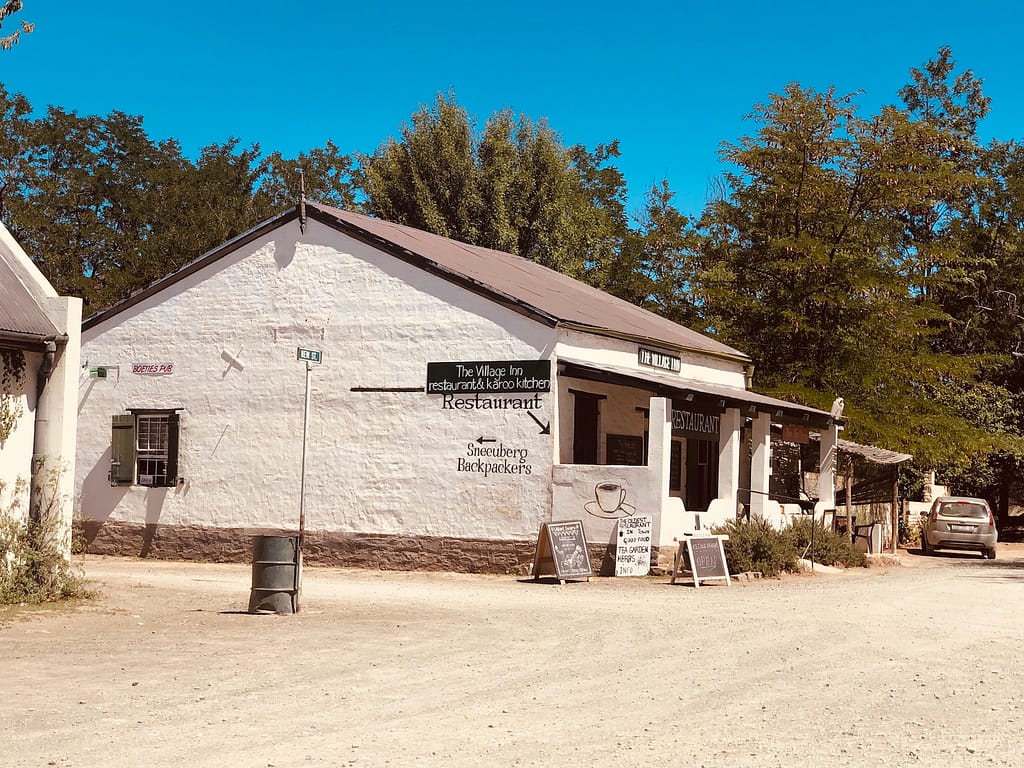
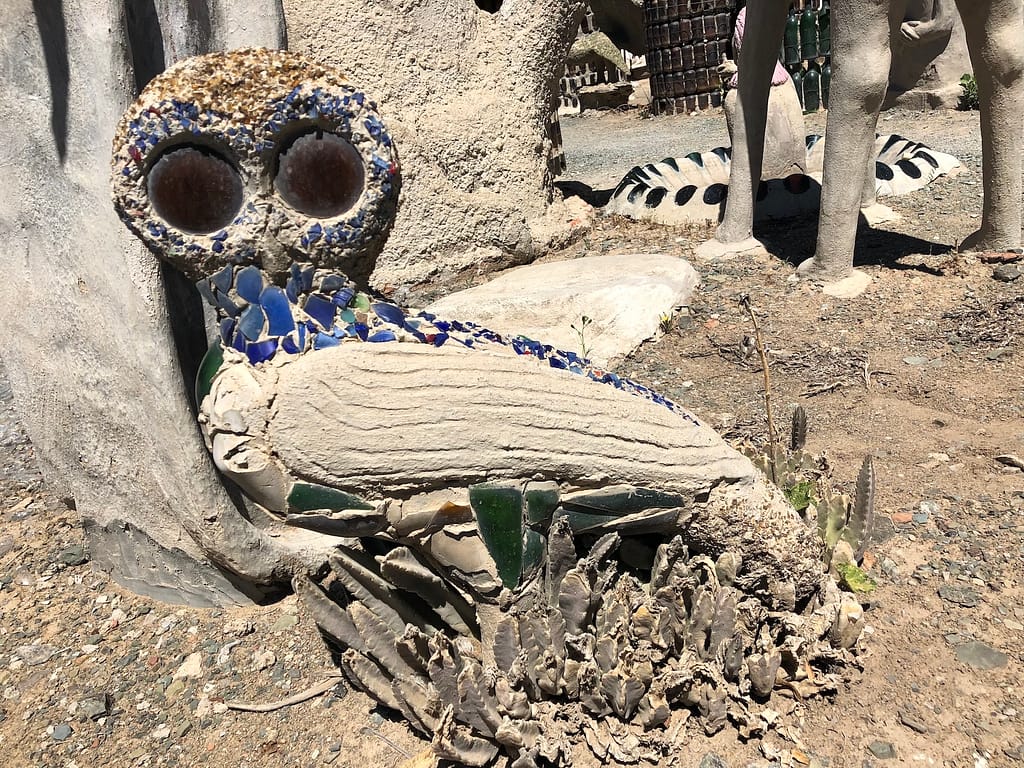
Traveling from Cape Town to Livingstone: the diamond city of Kimberley
Kimberley, the capital of South Africa’s Northern Cape province, is known as the city of diamonds.
The oldest mining town in South Africa is synonymous with the diamond rush, today the city offers visitors the opportunity to stroll through the streets of an interesting mining village offering a fascinating insight into the life and times of the Diamond Rush.
The incredible Big Hole is the main attraction of Kimberley, it is the crater of the ancient Kimberley diamond mine, which occupies an area of 17 hectares, 463 meters wide, with a depth of 240 meters, and which has been active since 1871 to 1914.
Big Hole in Kimberley is considered one of the deepest cavities excavated by man and thanks to a viewing platform it is possible to admire this incredible site.
Also interesting is the museum that tells the story of the miners and illustrates, with replicas, the discovery of the gigantic diamonds found in the mine.
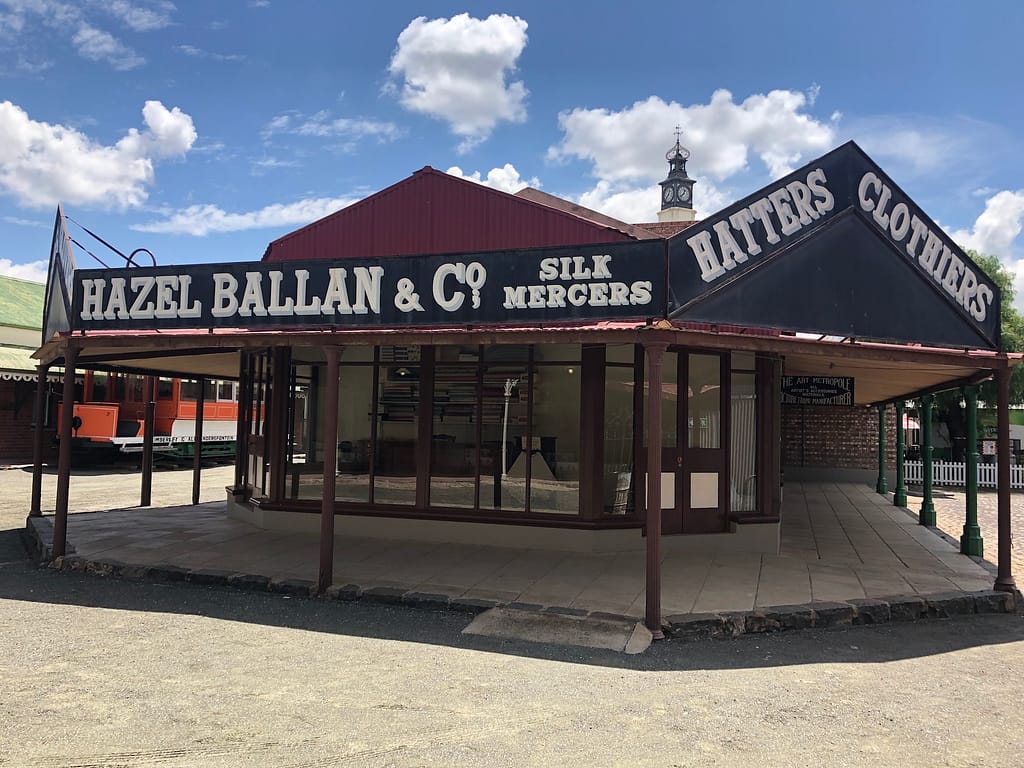
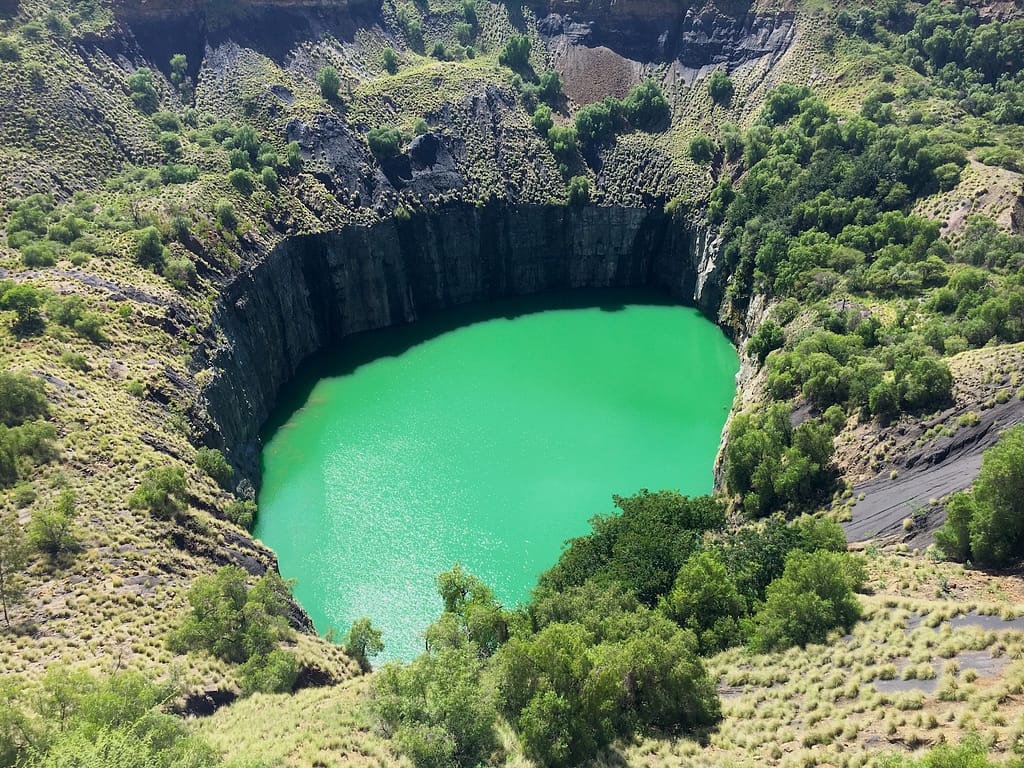
Traveling from Cape Town to Livingstone: Johannesburg
Johannesburg is a city that offers a lot to those who visit it, its museums are well structured and interesting, art galleries welcome new talent and the food scene is exceptional.
In Jozi, as the black locals call it amicably, or in Joburg as the whites like to call it, it hosts fantastic Farmer Markets where you can taste incredible dishes cooked on the spot.
Soweto is absolutely not to be missed, the immense township gives strong emotions and certainly leaves its mark on anyone who visits it.
Johannesburg with its glittering malls is also the South African shopping mecca, plus it is a cosmopolitan city with very friendly and open-minded people.
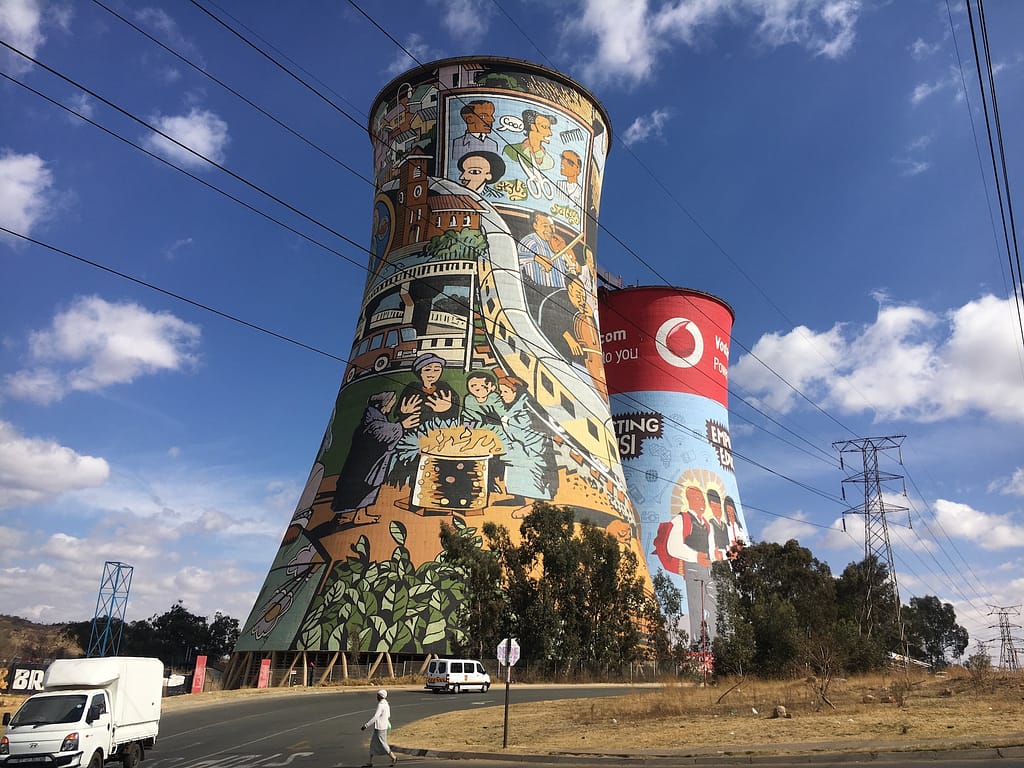
Traveling from Cape Town to Livingstone: Khama Rhino Sanctuary in Botswana
The Khama Rhino Sanctuary will be our first stop in Botswana, this sanctuary for rhinos, both white and black, is an important repopulation and conservation project of one of Africa’s most iconic animal species but also the most persecuted by poaching.
The Khama Rhino is certainly a success story, in the reserve there are numerous specimens of rhinoceros and numerous other species of animals including giraffes, ostriches, zebras and antelopes, predators are absent in order not to create a source of stress and danger to the young rhinoceros.
Visiting the Khama Rhino Sanctuary is an experience that combines the possibility of enjoying an excellent safari and at the same time contributing to the protection of these beautiful animals.
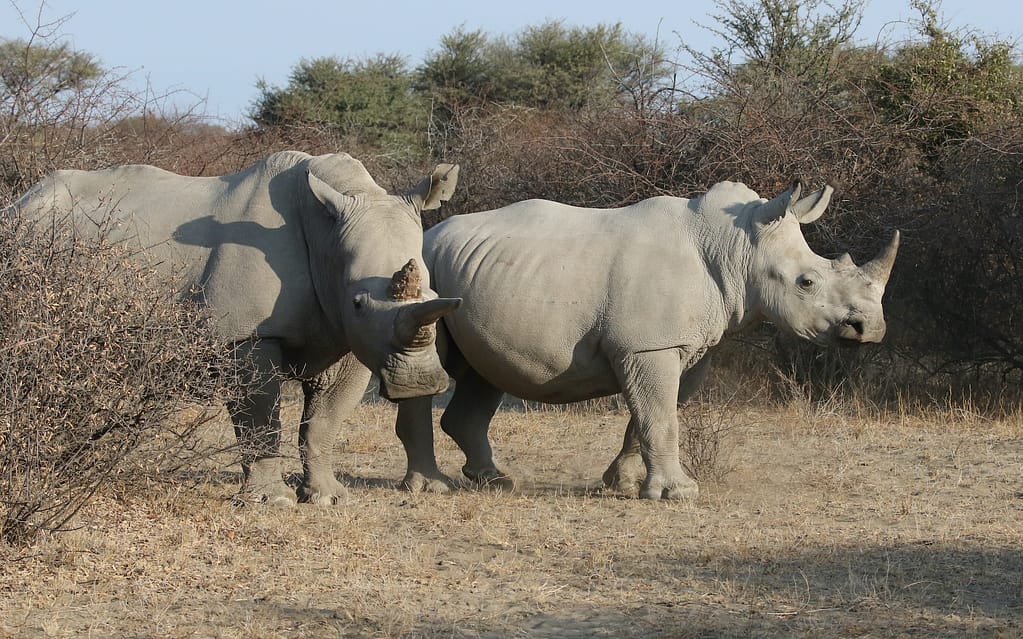
Traveling from Cape Town to Livingstone: the Okavango Delta in Mokoro
The Okavango Delta is a place of incredible beauty and is home to an exceptional amount and diversity of animals, the maze of canals that form the delta and the alluvial plain create the ideal habitat for the survival of mammals, birds and reptiles.
The Okavango River, which flows from Angola, does not flow into the ocean but creates this wonderful inland delta.
We will explore the canals of the delta aboard a mokoro, that is the typical boat that was used by the local population of the Okavango delta to cross and fish between the water channels, it is a canoe that is pushed through the shallow waters delta from standing aft and pushing with a long pole.
Mokoro safaris offer the opportunity to observe the sights and sounds of nature at water level, it is a great way to see animals from a new perspective without running the risk of frightening animals and birds with the sound of an engine.
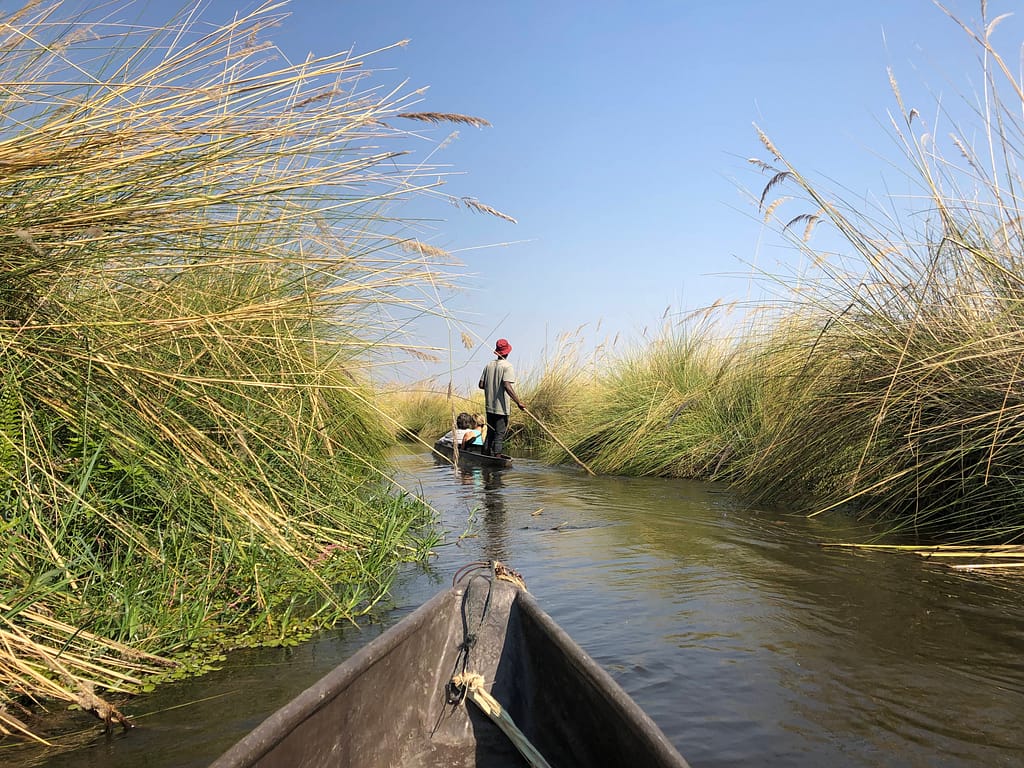
Traveling from Cape Town to Livingstone: Makgadikgadi National Park
Located in northwestern Botswana, Makgadikgadi National Park is a remote place where pan, or salty depressions, create a surreal landscape.
The Makgadigadi Pans complex of Botswana is the site of one of the largest zebra migrations in Africa as well as being one of the largest salt flats in the world.
The safaris in the Makgadikgadi National Park allow you to observe those animals that have adapted to living in extreme conditions and to the desert as the park experiences semi-desert conditions; the animals that inhabit Makgadikgadi are hyenas, lions, baboons, giraffes, meerkats, warthogs, jackals, elephants, springboks, bushbucks, hartebeest and numerous species of birds.
In the dry season, the pan, now dried up and dried, create white expanses as far as the eye can see, the dazzling light and the sense of desolation create a unique atmosphere.
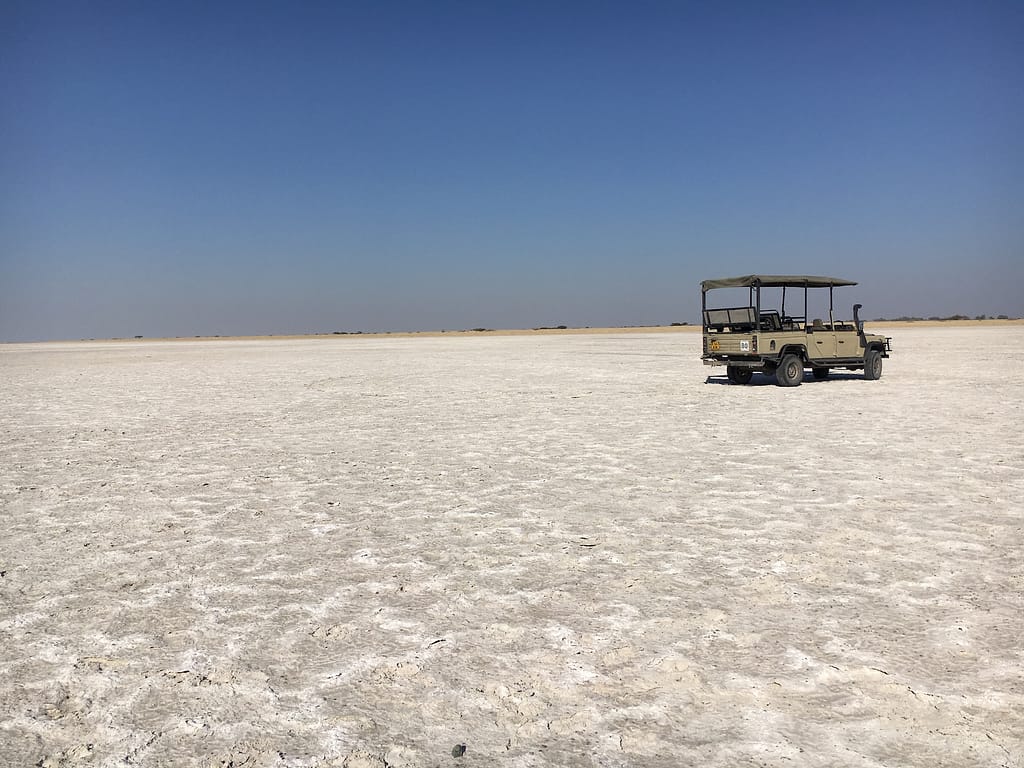
Traveling from Cape Town to Livingstone: Elephant Sands
Elephant Sands is a private reserve famous for watching elephants drinking from the waterhole right in front of the lodge.
The puddle is the focal point of this camp, animals such as impalas, elephants and kudus come in the late afternoon for a drink; what better company for an aperitif at sunset?
The best time to visit is during the dry months from May to November, when the animals gather around the pools of water.

Traveling from Cape Town to Livingstone: Chobe National Park
Chobe National Park is Botswana’s first national park, established in 1968 and includes floodplains, swamps, forests and of course the Chobe River which provides a constant source of water throughout the year.
Chobe National Park is the most biologically diverse park in Botswana and is famous for the huge population of elephants that populate it: it is estimated that there are around 120,000 specimens present.
During the dry season, from May to October, water-dependent animals, especially elephants, buffaloes and predators, flock to the banks of the Chobe River providing exceptional sightings with both the traditional 4 × 4 safaris and the boat safaris they offer. spectacular photo opportunities.
The Chobe is an excellent destination for birdwatchers, as there are over 500 different species of birds.
